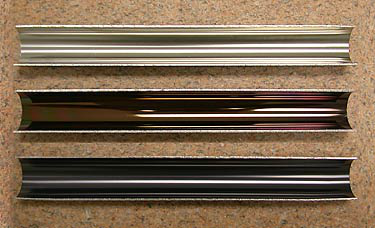Encyclopedias
The work reliability and service life of engineering machinery is very closely related with the pollution state of the hydraulic system. According to the domestic and international statistics, 70% faults of engineering mechanical hydraulic system are caused by the pollution of hydraulic system,in which, 60% -70% of total pollution faults are hydraulic system faults caused by solid particle pollutants.
The pollution of hydraulic system can directly influence the work condition of entire hydraulic system. Currently, the problem to overcome for the hydraulic system is how to control and reduce the system pollution effectively, so as to ensure the reliability and service life of all hydraulic components and overall system. Therefore, rational analyzing and effective controlling the pollution of hydraulic system is the key to ensure normal work of construction mechanical hydraulic system and extend the service life.

High precision steel tube picture
1、Resource of hydraulic system pollutants
Hydraulic system pollutants mainly include potential pollutants, recycled pollutants and invading pollutants. To sum up, hydraulic system pollutants can be divided into following types: solid particles, air, water, chemical substances and microorganisms etc., in which, the harmfulness caused by solid particle pollution is greatest.
2、Harmfulness and cause of solid particle
In tall pollutants, solid particles are the most common and harmful pollutants in hydraulic system. As to the faults caused by hydraulic system pollution, 20% faults are due to corrosion, 50% of the mechanical wear is due to the component surface damage caused by the presence of solid particles.
2.1 、Constitution and distribution of solid particle
Solid particles constitute of dust, sand, abrasive powder, sediment and fiber generated from spallings, colloidal substances, metal powders and air mainly. The distribution of solid particles in hydraulic system is shown in the table
2.2 Main resources of solid particles
Solid particles are mainly generated from following aspects:
(1)Flake iron rust attached to the inner wall of rigid pipe of the system and chemicals acid in the pipe after acid cleaning.;
(2)Iron scales remained during cutting, threading and other processing of rigid pipe;
(3)Residues of sealing elements. As the restrictions of sharp edge of integration part, tightness and other conditions, the sealing elements may be broken partially, and the broke part may access to the system directly;
(4)Internal dust of high-pressure hose assembly and colloidal pieces at some of joint localities;
(5)On the site of hydraulic system assembly, the stone and dust access to the pipeline due to environmental factors, this situation is rare;
(6)Sand residuals, processing iron scales and sealing residues remained in inner hydraulic components retained. As the hydraulic components should be cleanned and tested necessarily before leaving the factory, thus this situation is rare.
2.3 Harmfulness of solid particle pollution
2.3.1 It may adhere and block the filter holes, various clearance and channels, which may cause difficulties in operation, cavitation and noise.
2.3.2 It may damage the lubricant film, increase the friction and wear of machinery. Solid particles may break the lubricant film whose thickness is smaller than 0.6 of the solid article size, so that the friction and wear of machine will increase significantly. There are five forms: abrasive-material wear, erosive wear, adhesive wear, fatigue wear and corrosion wear. Abrasive wear is foremost among these. Each of above wears may generate new wear, therefore further aggravating the element wear. Wear will lead to leakage of hydraulic components, decrease efficiency, shorten the service life or even damage the components.
2.3.3 It may accelerate the wear of sealing elements and increase external leakage. Solid particles will accelerate the damage of sealing elements of hydraulic cylinder, damage and wear the movement surface of hydraulic cylinder; it may increase internal and external leakage of hydraulic cylinder, cause inadequate thrust push or unstable movement, decrease creeping speed and generate abnormal sounds and vibration.
2.3.4 It may block the holes of hydraulic components partially or completely, which may cause the control element failure.
2.3.5 Metal and metal-compound particles in the solid particles may catalyze the oxidation and degeneration of fat liquor, and the oxidation of fat liquor may deteriorate the quality of fat liquor and reduce the lubricity.
When the clearance of component is blocked by solid particles, wear chain reaction will generate, and the generation of wear chain reaction is because that, the wear pollutants in the system have not been effectively controlled, and the system components will further wear and produce more solid particles. Thus it will further affect the performances of entire hydraulic system. Therefore, taking effective measures to remove the oil pollutants (especially for solid pollutants) is the premise to guarantee normal work of engineering mechanical hydraulic system.
3、Air defense measure
Pollution control of hydraulic system penetrates entire process of design, manufacture, installation, use and maintenance; solving the hydraulic system pollution can not remove pollutants completely, but can keep the pollution within the acceptable range of critical hydraulic components, and thereby achieve a rational balance. There are two measures to control hydraulic system pollution mainly: first, preventing pollutants from invading system; secondly, filtrating and purifying the fat liquor of the system.
3.1 Pollution control during design stage
At the design stage, you should carefully choose the equipments and structures which are prone to generate particles and impurities and pollute the fat liquor of system. From the angle of controlling solid particles pollution, you should prefer flange connecting structure and decrease the use of pipe joint, because pipe joint may generate massive abrasive dust while assembling and maintaining; breathing opening of the oil tank should be designed at some higher positions as hidden as possible, preventing the rain and dust invading; oil hose with liner can be chosen, etc.
At the design stage, the design and selection of oil filter is most important. During design, suction oil filter can be considered to added on the hydraulic components which are sensitive to oil pollution; oil return filter can be installed at the hydraulic components which are prone to generate abrasive dust; auxiliary oil filter can be installed at the oil inlet of key hydraulic components; as to the systems with large invading amount of pollutants, bypass filter can be installed as the supplement to online oil filter, so as to improve the cleanness and extend the service life of oil filter.
3.2 Pollution control during manufacturing stage
Outsourcing parts and commercial parts should be inspected strictly when coming to the factory, such as various valves, high pressure hoses, tanks as well as hydraulic oil etc. The key parts should be loaded,run in and cleaned. Except for the commercial hydraulic components and some hoses, the hydraulic pipeline prepared on the site must carry on acid cleaning and rust removing. Pipeline should go through the following process: degreasing, acid cleaning, neutralizing, deactivating, drying, oiling and sealing. Before acid cleaning, the pipe should be degreasing handled and then washed with purified pressure water, so as to remove the alkaline solution and oil at the internal and external wall of the pipe. All sealing surfaces and screw threads can be cleaned only after oiling.
After acid washing, it is necessary to perform ballasting wash to the pipe, and ballasting wash is a very important step during the assembly process of hydraulic system. After ballasting washing, the impurities in the pipe can be washed away. While washing, you should uniformly beat the welding, flange, diameter- varying pipe, tri-branch and elbow regularly, thus the impurities on there parts will fall down and be flushed away with the oil.
Note: the acid wash and ballasting wash should be performed before assembling, because the pipe may rusty while assembling if the pipe is handled too early and left aside for a long term.
Before assembling, all need-cleaning hydraulic components and accessories must be cleaned thoroughly, and the oil outlet should be sealed with a sealing plug; while assembling, firstly you should prevent environmental pollution, and you can make the indoor pressure higher than outdoor if there are conditions, so as to prevent dust pollution. Secondly, dry assembly should be adopted, ie. each component should be assembled after cleaning and drying with dry compressed air. Finally, the assembling personnel shall keep the assembling tools, filter screen and oil containers clean, assemble according to relevant rules, and minimize the pollution caused by human factors.
|
PREV:Steel pipe encyclopedia
NEXT:Metal material noun explanation |
go back |



